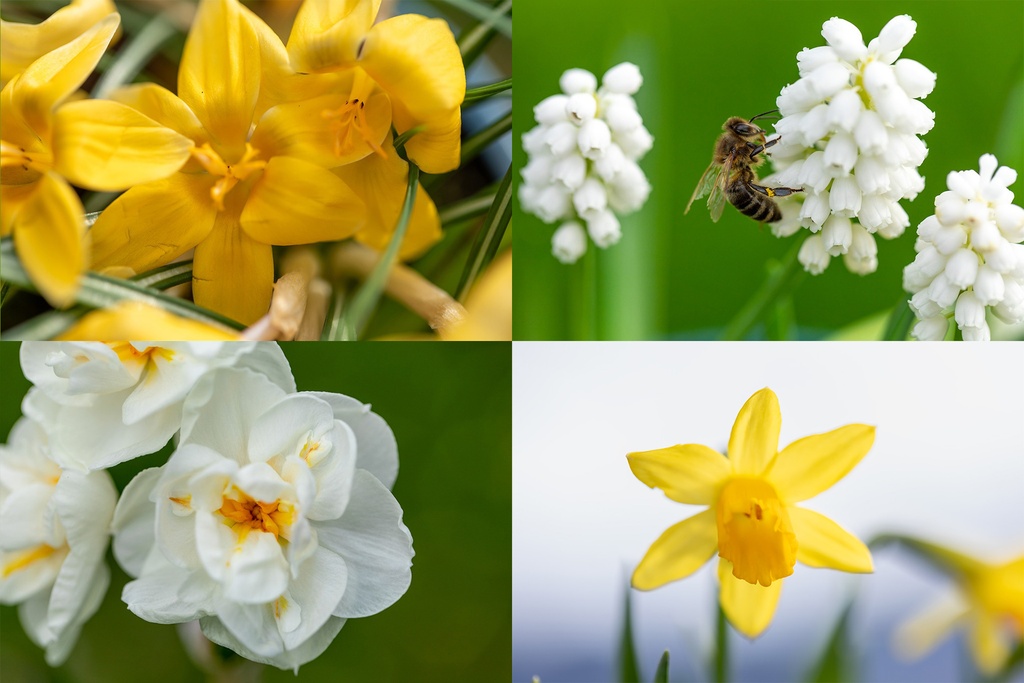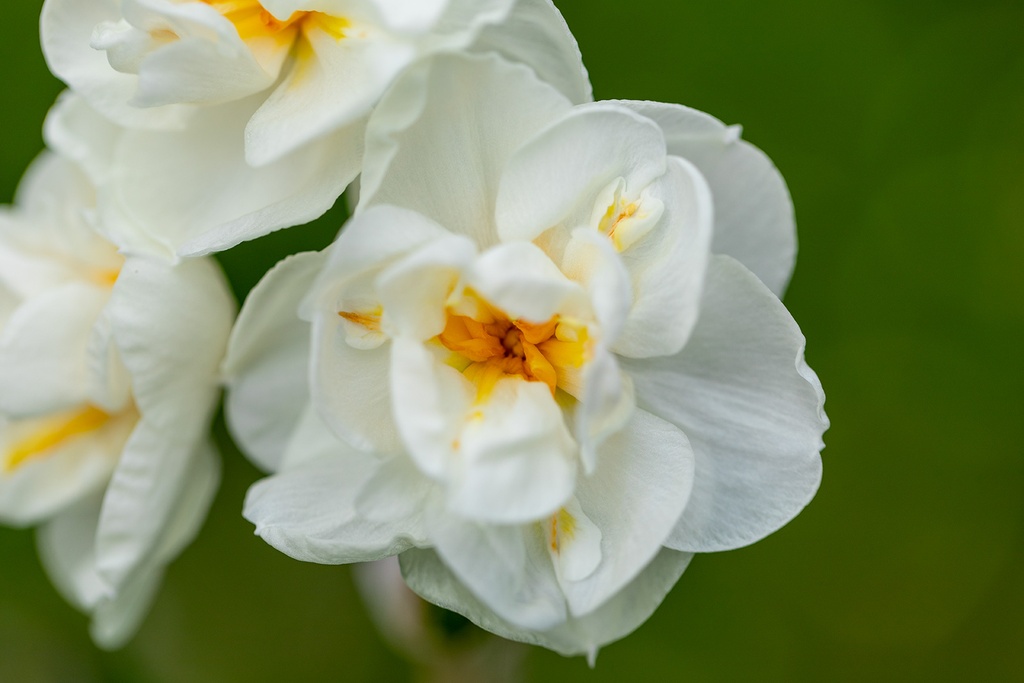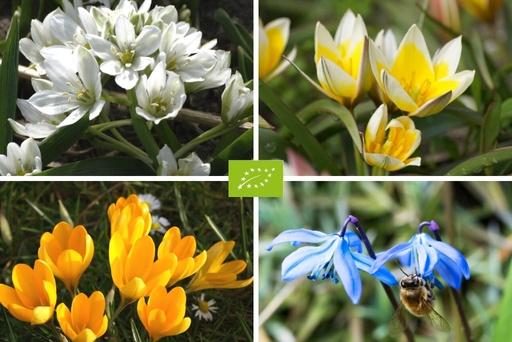Bee Bulb Mix, Royal Appetizer
The Bee Bulb Mix 'Royal Appetizer' attracts all pollinators.
It is a mix that spreads easily.
The mix contains 30 bulbs of each variety: Crocus 'Golden Leaves', Muscari 'Cloud', Narcissus 'Mini Yellow', Narcissus 'Nougat'. Total 120 bulbs.
The height of the flowers ranges between 15 and 60 cm.
Tags :
| Quantity | 120 bulbs |
Climate and soil requirements
Bulbs thrive in cool climates and require a period of cold dormancy to grow and bloom successfully. They prefer areas with cold winters and moderate springs. In terms of soil, tulips thrive in well-draining soil that is rich in organic matter.
Planting bulb mixes
Timing: bulbs are typically planted in the fall, before the ground freezes. This allows them to establish roots before winter sets in. Ideally, plant tulip bulbs around 6 to 8 weeks before the first hard frost in your area.
Location: Choose a location for planting bulbs that receives full sun or partial shade. Avoid areas with excessive moisture or standing water, as this can lead to bulb rot.
Soil preparation: Prepare the soil by removing any weeds or grass and loosening the top layer. Incorporate organic matter such as compost or well-rotted manure to improve drainage and provide nutrients.
Planting depth and spacing: Plant bulbs at a depth of approximately 15 cm. Space the bulbs around 10 cm apart to allow for proper growth and airflow.
Backfill and watering: After placing the bulbs in the planting hole, backfill with soil, gently firming it around the bulbs. Water thoroughly after planting to settle the soil and ensure good contact with the bulbs. This initial watering helps initiate root growth.
Care during cultivation
Watering: Flower bulbs require regular watering, especially during dry spells. Keep the soil evenly moist but not waterlogged. Avoid overwatering, as it can cause bulb rot.
Fertilizing: Apply a balanced fertilizer or bulb-specific fertilizer in early spring when the foliage begins to emerge. Follow the manufacturer's instructions for application rates. Avoid fertilizing after flowering, as this can divert energy from bulb development.
Mulching: Apply a layer of organic mulch, such as straw or shredded bark, around the bulbs in late fall to help insulate the soil and protect against extreme temperature fluctuations. Mulch also helps retain moisture and suppress weed growth.
After flowering: Once the flowers have finished blooming, deadhead the flowers by removing the faded blooms. Allow the foliage to remain until it turns yellow and withers completely. This process allows the bulbs to store energy for the next growing season. Avoid cutting back the foliage prematurely.
| 1 | 2 | 3 | 4 | 5 | 6 | 7 | 8 | 9 | 10 | 11 | 12 | |||||||||||||||||||||||||||||||||||||||||||||||||||||||||||||||||||||||||||||||||||||
|---|---|---|---|---|---|---|---|---|---|---|---|---|---|---|---|---|---|---|---|---|---|---|---|---|---|---|---|---|---|---|---|---|---|---|---|---|---|---|---|---|---|---|---|---|---|---|---|---|---|---|---|---|---|---|---|---|---|---|---|---|---|---|---|---|---|---|---|---|---|---|---|---|---|---|---|---|---|---|---|---|---|---|---|---|---|---|---|---|---|---|---|---|---|---|---|---|
| Plant | ||||||||||||||||||||||||||||||||||||||||||||||||||||||||||||||||||||||||||||||||||||||||||||||||
| Harvest | ||||||||||||||||||||||||||||||||||||||||||||||||||||||||||||||||||||||||||||||||||||||||||||||||










![[BU-22567] Mélange De Bulbes Pour Abeilles, Apéritif Royal](/web/image/product.image/1153/image_1024/%5BBU-22567%5D%20M%C3%A9lange%20De%20Bulbes%20Pour%20Abeilles%2C%20Ap%C3%A9ritif%20Royal?unique=712c01e)





![[BU-22567] Mélange De Bulbes Pour Abeilles, Apéritif Royal](/web/image/product.image/1153/image_128/%5BBU-22567%5D%20M%C3%A9lange%20De%20Bulbes%20Pour%20Abeilles%2C%20Ap%C3%A9ritif%20Royal?unique=712c01e)

